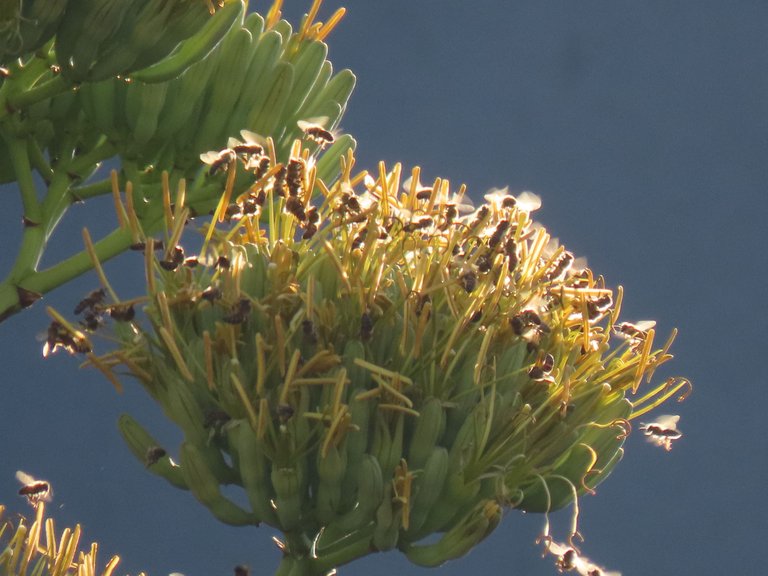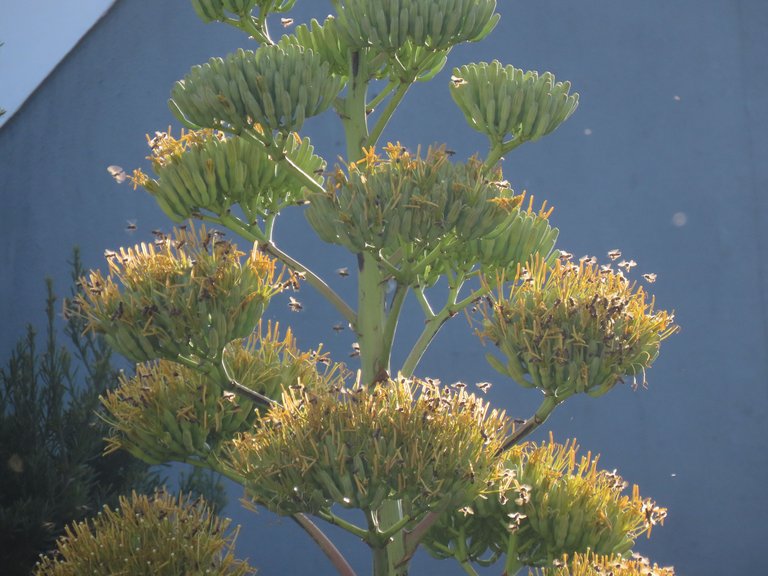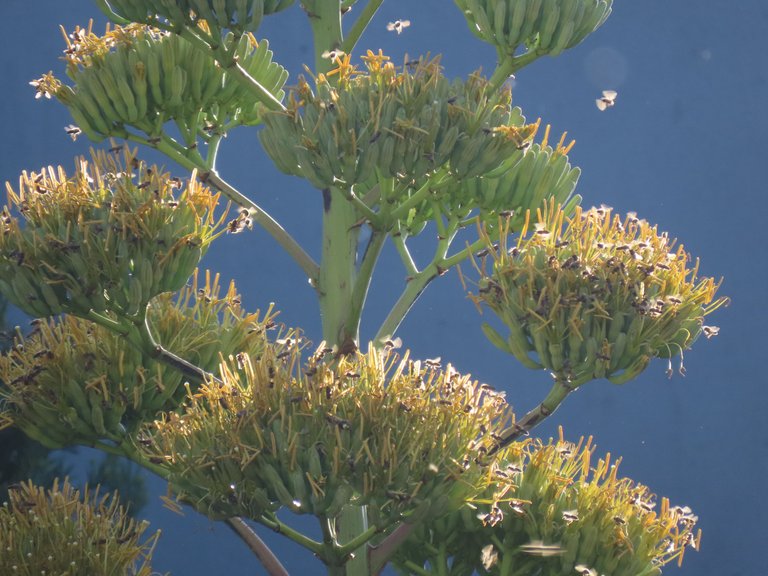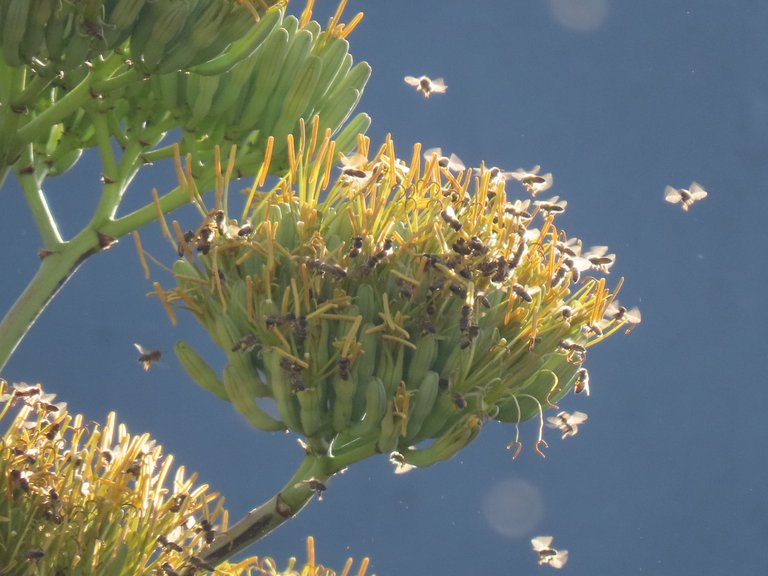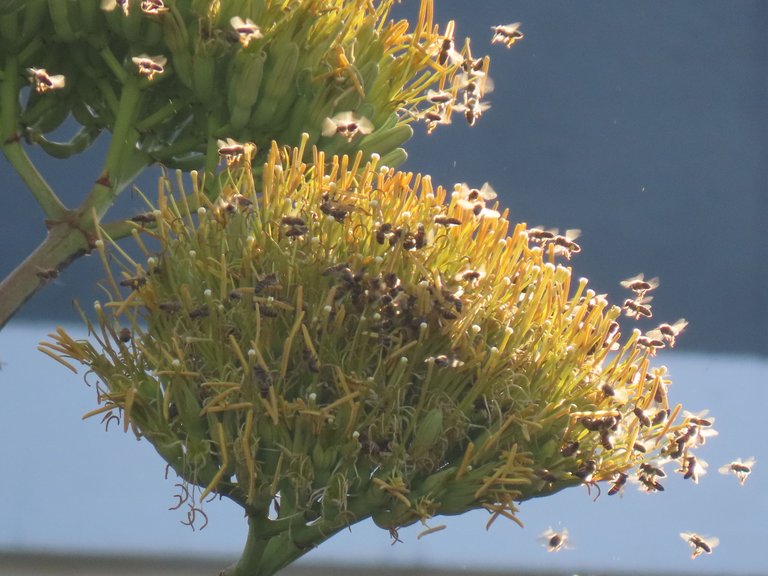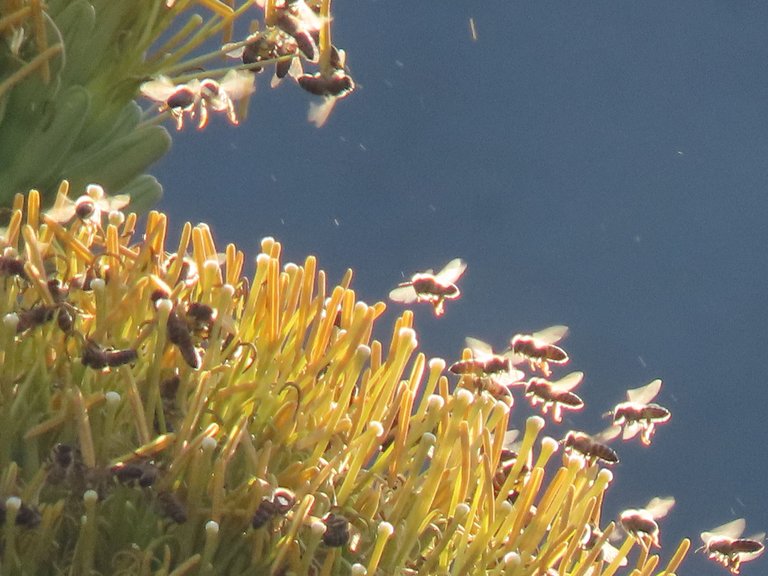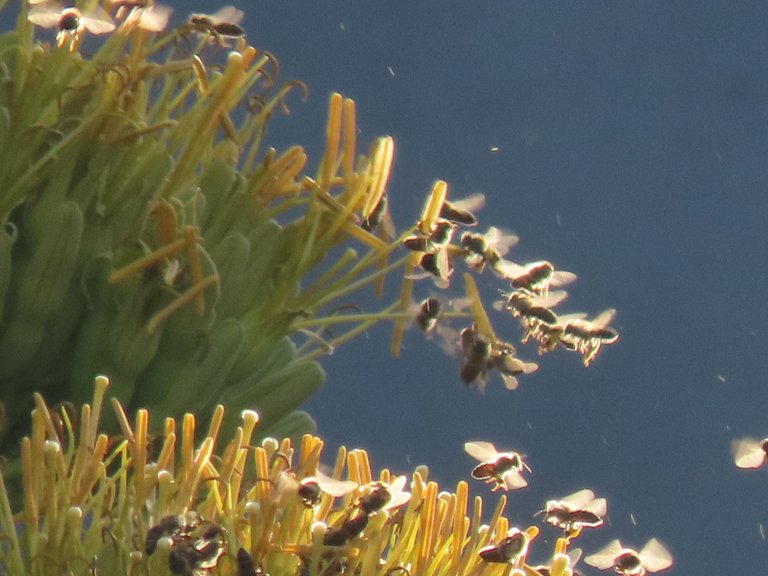They say that it takes 12 bees their entire lives to produce 1 teaspoon of honey.
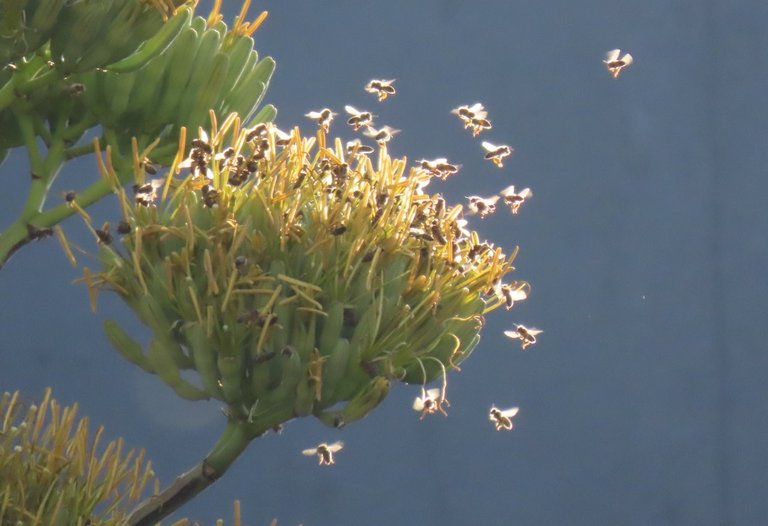
I was stunned when I read the facts about bees in the URL Source below.
There are 10 facts about bees in the URL, and fact number 7 states this.
SEVEN
The average worker bee lives for just five to six weeks. During this time, she’ll produce around a twelfth of a teaspoon of honey.
We visited the Simply Bee farm shop in a town called Hopefield some time ago, and I shared some of their activities and products in a post on my blog at the time.
Now I took shots of this bee swarm working on a Century Agave across the road from our house, and I could hear that particular zoom sound when bees enmass are pollinating close by.
So, come and watch the action.
You can see that this is the top part of the century agave plant.
The century agave plant is also very interesting, as when this high stem dries up and falls over, then the main plant below dies. You can read about the Century Agave plant on google and you will be amazed. Century means a hundred years, but in fact they take about 15 years to mature.
"Flowering is a spectacular event: the plant becomes deflated as it rapidly sends forth a towering inflorescence / flowering pole that can be up to 10 meters tall". Century plants are not originally from here, as they come from the USA, Mexico, and South America.
Source: Field Guide to Succulents in Southern Africa".
Interestingly, the bees only come to the flowers on this plant in the later afternoon while the plant is still bathed in sunshine. As soon as the sun starts moving off one of the flowers, the bees move to the sunshine filled flowers of this plant.
It seems that the specific agave flowers will attract specific pollinators, and bees have a very strong sense of smell. This particular agave releases its nectar in the late afternoon / early evening, and the bees come in to party.
I am, or I think was, allergic to bee stings, as I ended up in hospital on 3 occasions after being stung. A doctor told me that one can start to build up a natural resistance to bee stings, and I think that he was correct, as after yet another sting, nothing happened. No swelling of my face and neck, and no choking for breath. But I am not too concerned about it, as I love bees, and I like honey.
Such is life.
I hope you enjoyed the pictures and the story.
Photos by Zac Smith-All-Rights-Reserved.
Camera: Canon PowershotSX70HS Bridge camera.
Thank you kindly for supporting this post.
